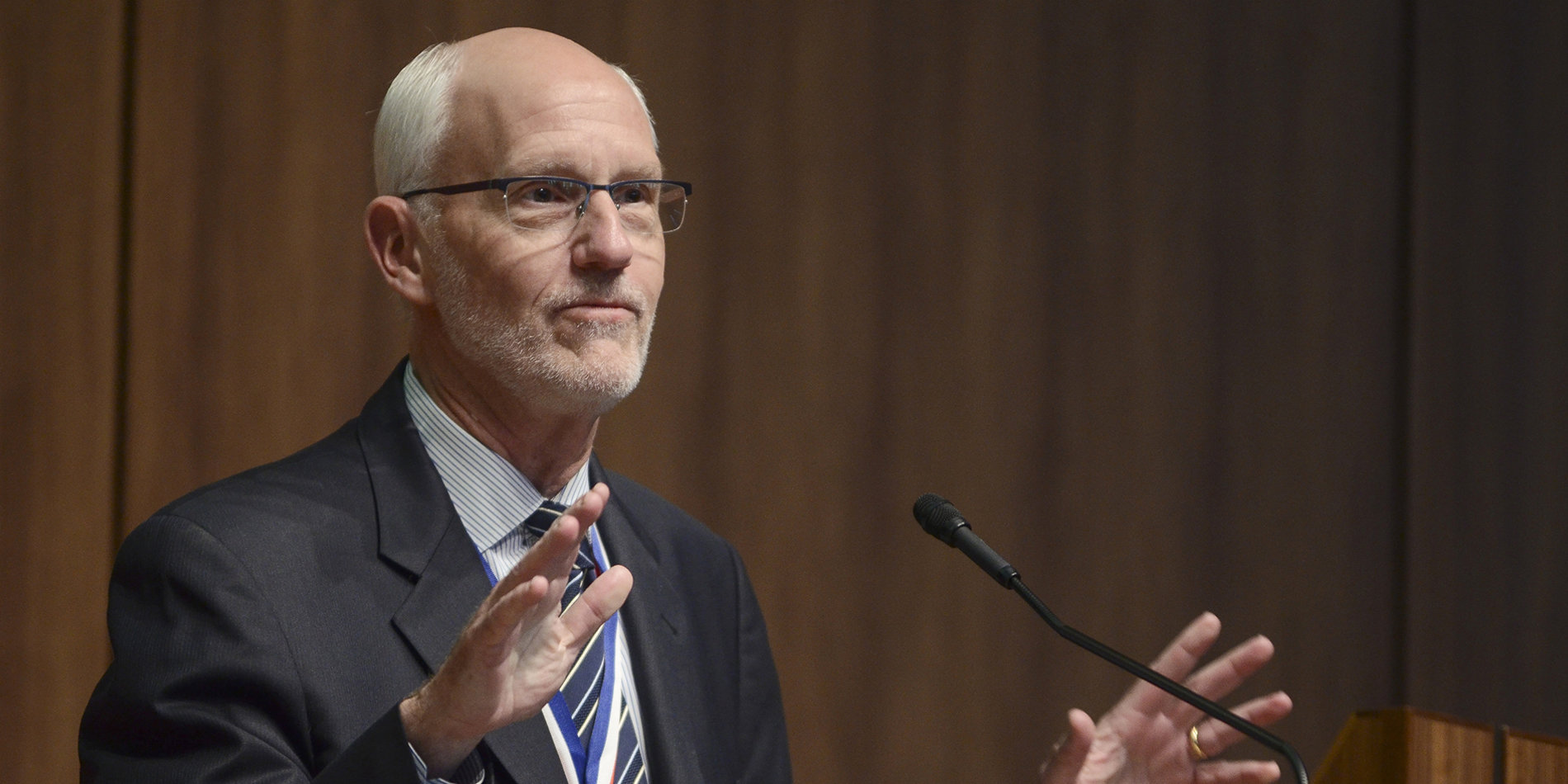Paul Yock receives the National Academy of Engineering’s Gordon Prize
How do you teach health technology innovation? In 2000, Paul Yock, a professor of medicine and of bioengineering, answered that question by establishing Stanford Biodesign, a novel academic training program that combined a real-world, need-driven approach with an educational framework of collaboration between physicians and engineers, project-based learning and mentoring from experts across Silicon Valley.
And it worked. Last week, Yock was recognized by the National Academy of Engineering, which formally presented him with the 2018 Bernard M. Gordon Prize for Innovation in Engineering and Technology Education.
The Gordon Prize is intended to recognize new modalities and experiments in education that develop effective engineering leaders. It is, according to Stanford Provost Persis Drell, who opened the ceremony, “the most prestigious award in engineering education.”
Drell continued: “As the founder and director of the Stanford Byers Center for Biodesign, Paul has had a tremendous impact on biomedical innovation. Stanford Biodesign was one of the first academic training programs to bring together talented engineers and physicians to collaborate on project-based learning. In the 18 years since its launch, technologies and devices invented by alumni have improved the lives of more than one million patients, and the program has become the model for health care innovation training across the country and around the world.”
A Complex Process
“Health technology innovation is complex because there is a web of stakeholders, including doctors, patients, hospitals, insurers, regulators, the government and investors, all of whom have a say in whether or not your technology reaches patients,” said Ross Venook, a lecturer in bioengineering, the director of engineering at Stanford Biodesign and a Biodesign Innovation Fellow in 2006–07.
“Twenty years ago, if you had an idea about how to improve care, you had to work out everything on your own, maybe find a mentor or a series of mentors to help you. There wasn’t a process in place. Paul and his team took it upon themselves to figure out how to train the next generation of leaders in medical technology innovation.”
Drawing from his own experience as an innovator in the field of interventional cardiology, Yock came up with a two-pronged solution: formalize a process that starts with deeply understanding a problem in health care, rather than an idea for a new technology, and pioneer an educational approach in which innovators work in cross-functional teams, learn by doing and are mentored by both clinical and process experts.
Explaining the impact of this training on her own career, Asha Nayak, former chief medical officer of Intel and a member of the first class of Innovation Fellows in 2000–01, commented, “For me, it was transformative. When I became a Fellow, I had an MD, a PhD and hundreds of medical device ideas I didn’t know what to do with. I had no clue how to decide which ones were worth pursuing or how to bring them into practice.”
Nayak continued, “Biodesign became a launchpad for my career. It has helped me to build dozens of technologies and guide companies like Medtronic and Intel to deliver innovations that help many more patients than I ever could have otherwise.”
Education First
To date, Biodesign trainees initiated technologies during their training that have been used to care for more than 1.5 million patients. Those technologies have led to the formation of 47 start-up companies, which have created 960 jobs and attracted more than $700 million of invested capital.
“However,” said Venook, “the secret sauce in Biodesign is keeping the focus on education. It’s not about the next cool widget. It’s not about launching this company or that company. What it’s about is the innovators. As Stanford Biodesign co-director Tom Krummel told me on my first day as a Fellow, ‘We’re going to measure the success of this program not in a year, or two, or three, but in decades as our trainees use the process to bring products to patients.’”
Learn more about the Gordon Prize and Stanford Biodesign’s need-driven approach to biomedical innovation.



